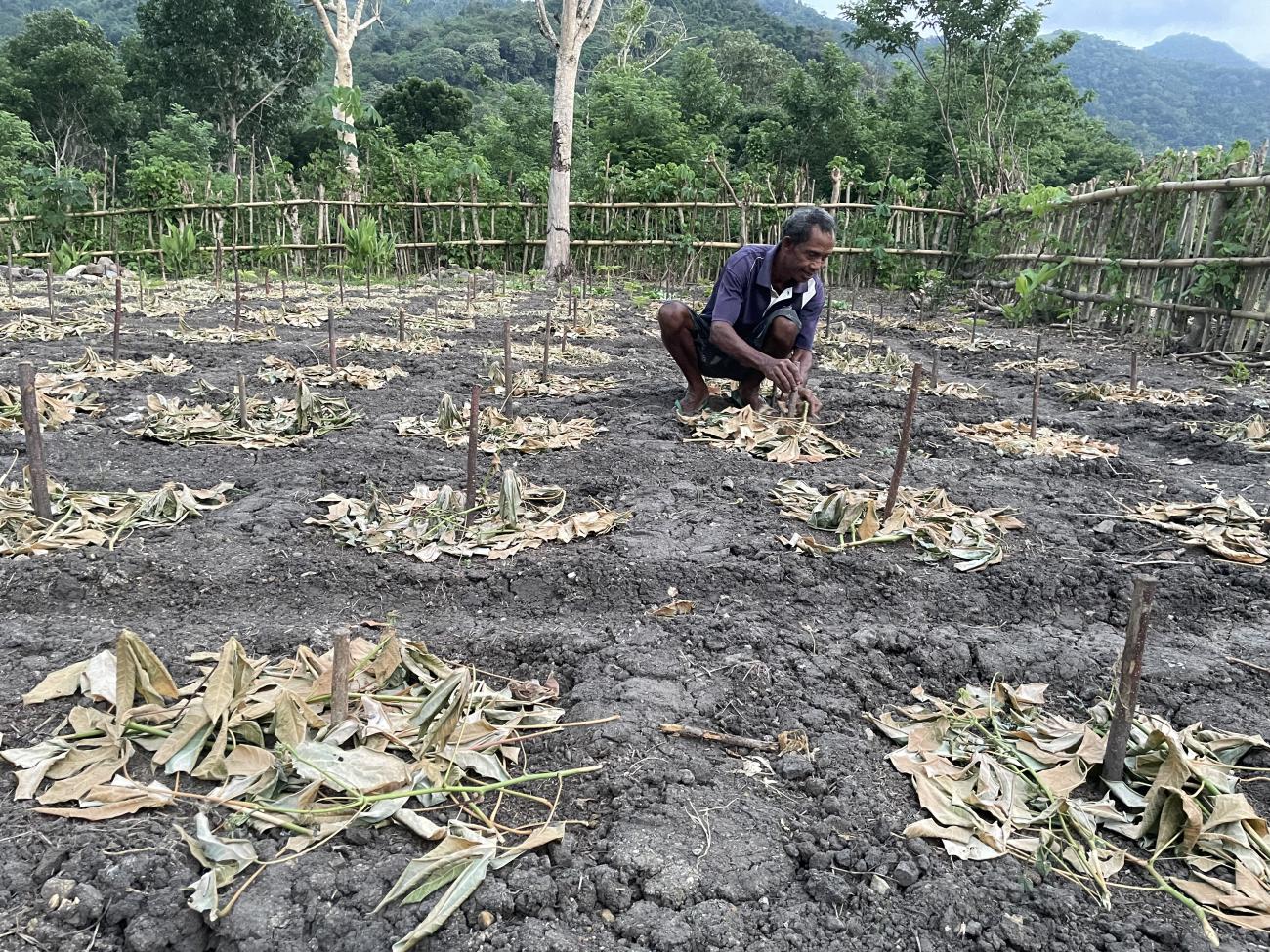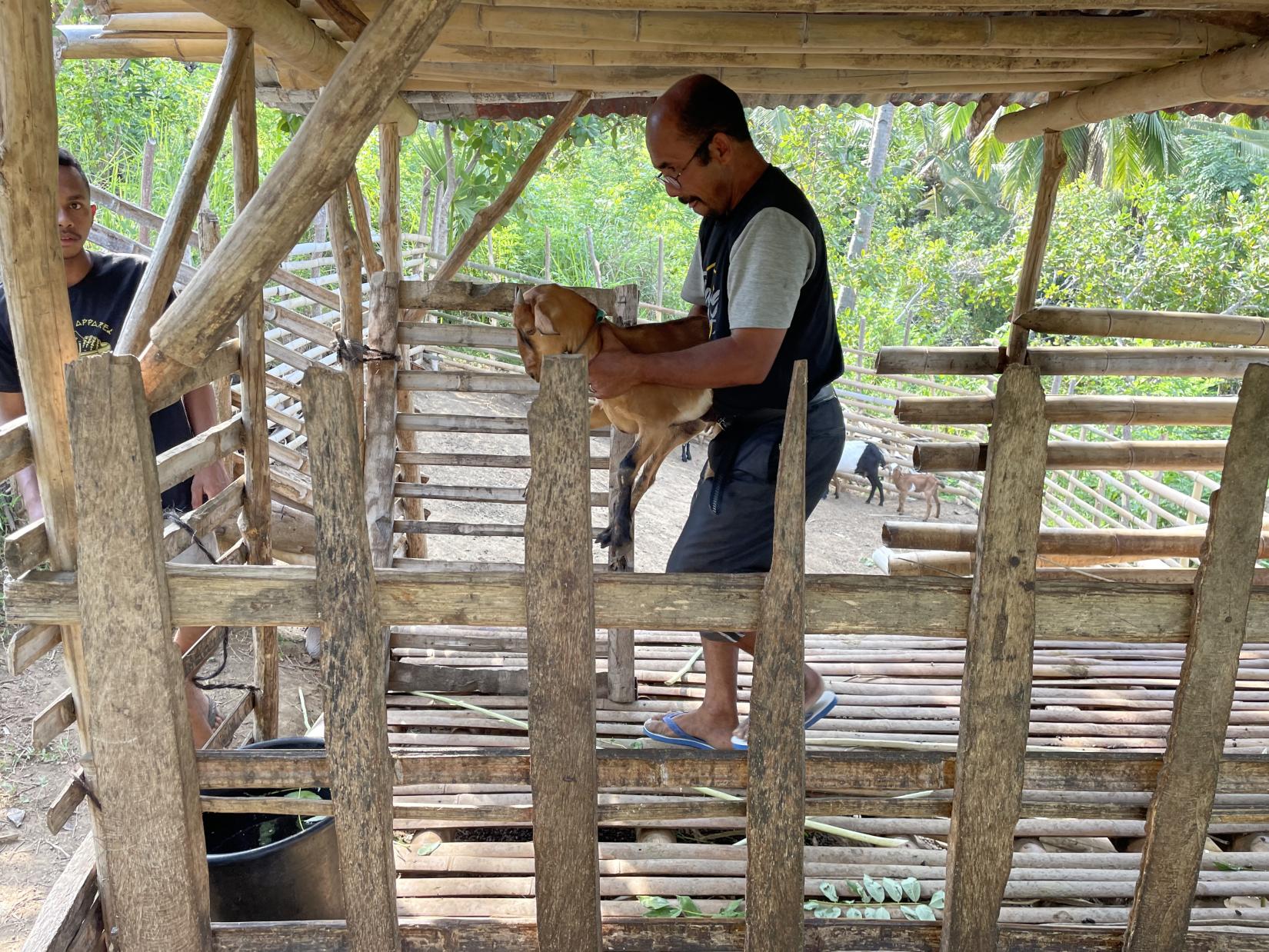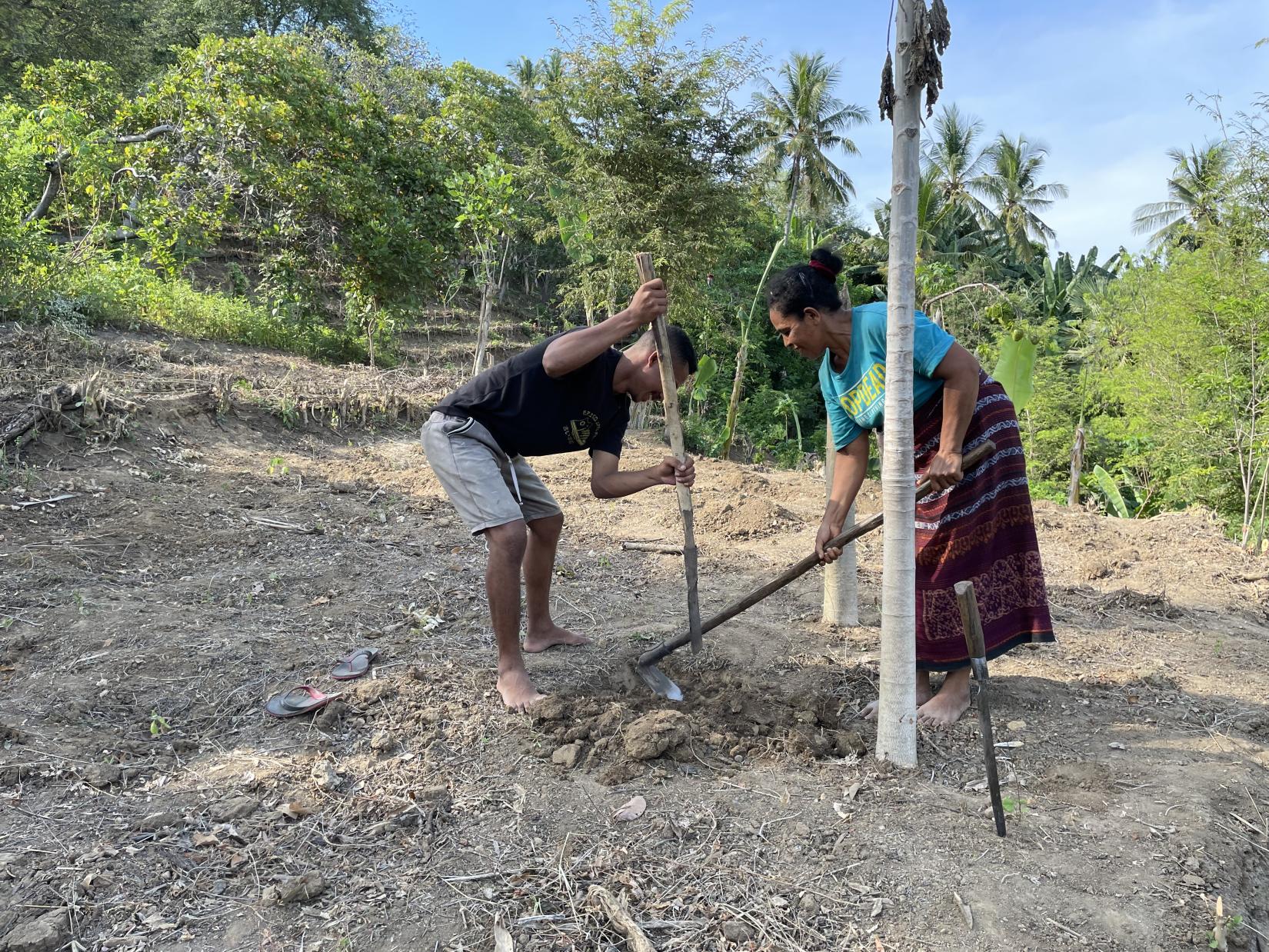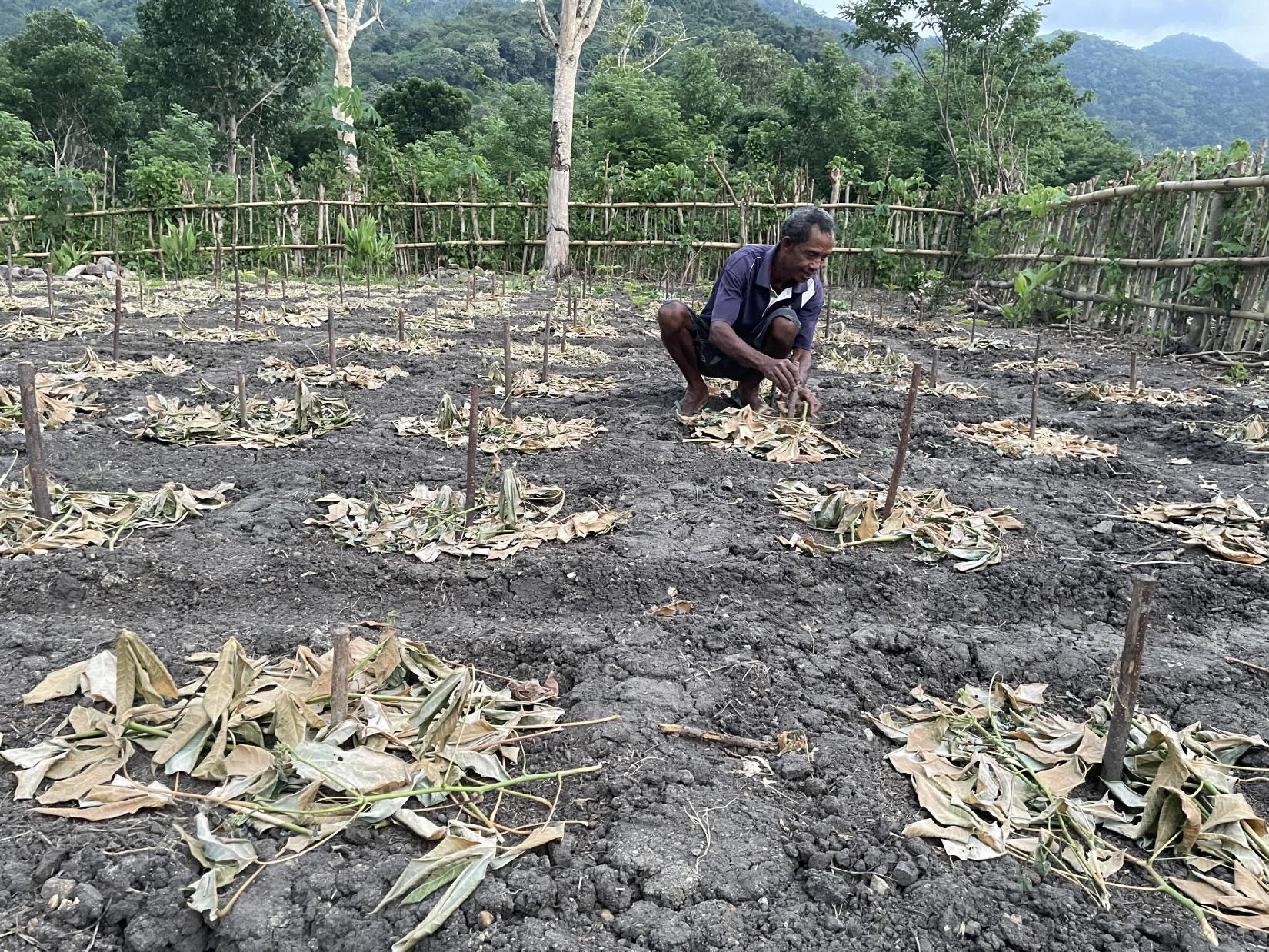Farmers in Eastern Indonesia Learn Ways to Turn Poor Land to Productive Use

FAO and local partners support farmers on marginal lands to fight erosion and flooding, increasing yields and income
NAGEKEO, FLORES ISLAND, INDONESIA – What is the link between manure and university education? Conservation agriculture, say Seferinus We’e and Krensensiana Nasa, a farming couple on the bucolic Eastern Indonesian island of Flores. Participants in a project supported by the Food and Agriculture Organization of the United Nations (FAO), and its NGO partners, Mr We’e and Ms Nasa have managed to increase their yields and income three and a half fold.
Through terracing and intercropping, they have put an end to erosion of their land in Nangaroro, located on a steep hill overlooking the Indian ocean. Through capturing the manure of domestic animals and using it as organic fertilizer on their conservation agriculture plots, their corn yield has increased from two tons per hectare to seven. And in that surplus corn, which they sell for cash, lies the linkage between manure and education: their two oldest children are now at university in Jakarta.
“We could have never been able to afford that,” says Mr We’e, a former subsistence farmer, who now grows sweet potatoes, beans, corn and leafy vegetables such as pok choy for sale.
“Our food is guaranteed year-round and we have a regular income on top of it,” Ms Nasa adds. Forming terraces on their steep slopes took some work, but it paid off, as did keeping formerly freely roaming cattle and goats in animal pens, so that their manure can be collected and applied as organic fertilizer.
Scaling up
Local agriculture authorities have taken notice, too. As of the start of 2023, the technique promoted in a handful of villages by FAO through local implementation partner the Independent Farmer Partners Foundation (YMTM), is mainstreamed and made accessible to all farmers cultivating marginal lands, says Oliva Monika, Head of the Ministry of Agriculture’s Nagekeo District Office.
“These are very impressive results, and we have decided to roll out the methodology throughout the district,” she says. “YMTM will be overseeing this work.”
The Nagekeo district has around 21,000 farmers, and around 10% of them work on marginal land: agricultural areas less suitable for growing plants. Either the land is too steep, like in Nangaroro, with rainfall gushing down on natural slopes causing the loss of the top most, fertile soil, or the land is completely flat, with rainwater having nowhere to flow – turning what could be rich agricultural areas into wetland.
This has been the case for Amandus Buiu, a small-scale farmer in Wolowae, who could only plant rice on his one-acre plot that often gets flooded, rather than corn or horticultural products, which fetch a higher price.
Mr Buiu’s flat plot, with a slope of around 2%, now has small drainage canals to guide excess rainwater the soil cannot absorb down to the nearby creek, while intercropping of corn with beans means that there is enough shade, moisture and natural fertilizer from leaves in the soil for both plants to thrive. In the meantime, he has kept a rice paddy at the end of his plot, closest to the creek. “I am still experimenting with what balance of crops will work the best,” he says.
Supporting farmers, sustaining the environment
The support was much needed in Nagekeo, part of East Nusa Tenggara Province, one of the five least developed areas of Indonesia. Most of these provinces are agricultural, and moving farmers out of subsistence agriculture into generating an income is a key goal of the government, said Wayan Tambun, Project Manager at FAO Indonesia. “The methods we introduce – and our local partners help the farmers implement – conserve the land and resources, while increasing yields and incomes,” he says.
In another marginal area, Rendubutowe, where high elevation means much lower rainfall, FAO partners World Neighbors and VECO Indonesia have introduced to farmers the idea not only of terracing and the use of hedgerows to conserve soil and water but also of planting trees in order to minimize water run-offs in the rainy season and limit water shortages in the dry season. Farmers have moved from slash and burn agriculture and shifting cultivation to permanent farming. As a result of the new practices, the land in many areas is now covered by forests, providing natural erosion and flood control, carbon storage, and giving rise to new water springs.
“Before, our land was barren and infertile and could be used for agriculture only 5-7 months per year,” says farmer Andontius Pati. Twenty-five years later, his farm now consists of terraced land and areas with mahogany and gmelina trees, whose seeds and firewood he can also sell. “Before, I had to move the farm to a new piece of land because once there had been three harvests, the soil was no longer fertile,” he says. “But with terracing, and the use of leaves from leguminous crops as green manure, my harvest kept on increasing.” His “family forest,” as he calls it, ensures that the local creek never dries out and there is water in the soil year-round.
Life has much improved for the farmers who participate in the programme. Inheriting marginal land is no longer a curse, Mr We’e says. Now he can even think of taking a trip outside the province, he added:
“With our older children now in Jakarta, we hope we can go and visit them.”



This story is a part of the United Nations in Indonesia's "Those Not Left Behind" stories collection.
A version of this story was published on the FAO website on 3 April 2023.
Written by







